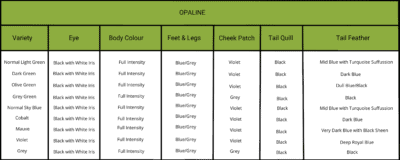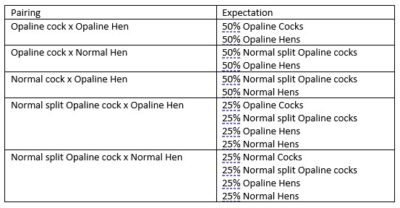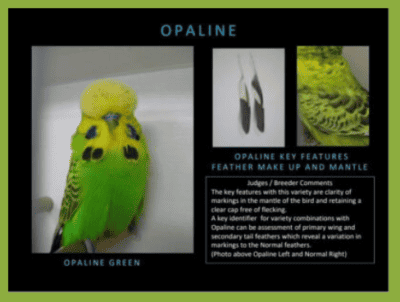
History of the Opaline Budgie | Budgerigar
To recount the history of the Opaline Budgerigar, it all started in 1933 when the first Opaline budgie was discovered among the wild budgerigars brought to the Adelaide markets by trappers. Mr. S. E. Terrill acquired an Opaline Light Green budgie, a hen in baby plumage. As a prominent breeder in Adelaide, South Australia, he established Opaline budgies across most of the normal varieties.
Subsequently, in 1934, the first British Opaline mutant was discovered in the aviaries of Mr. A. Brown of Kilmarnock. It was purchased by Mrs. Ashby of Ayr and paired with a Light Green cock. Unfortunately, the sex-linked nature of the gene only allowed for the production of normal offspring. However, the next breeding season saw the successful breeding of Opaline budgies by mating the original mutant Opaline hen back to her son. To this end, the successful pairing proved sex-linked nature of the gene.
UK fanciers named this new variety “marbled”. Meanwhile, Mr. Terrill named this new mutation “Opaline”. Once the budgerigar fancy throughout the world found that the English mutation was identical in all respects to that established in Australia a year earlier, they accepted the name.

Image Courtesy of Rod Turnbull and the ANBC
Identification of The Exhibition Opaline Budgie
The Opaline budgerigar is a popular exhibition variety, featuring solid and uniform body color that extends throughout the rump and underparts. Depending on the series, the face and forehead ground color can be yellow for green series or white for blue series, except for the yellow-face series. To be appropriate for the variety, the markings on the cheeks, back of the head, and neck must show minimal signs of grizzling, and the mantle area should display a clear “V” effect. The primary flight feathers and tail should carry a muted color flash.
The mask of the Opaline budgerigar is wide and deep, extending beyond two large cheek patches without any cleft. Notably, six evenly spaced, large, round black throat spots ornament the mask. The base of the cheek patches partially covers the outer spots of the mask. The feet are blue/grey, while the eye is black with a white iris ring. The opaline mutation occurs in various colors, including Yellow Faced Blue series, Black Eyed Self Colour, Dilute, Clearwing, Greywing, and Cinnamonwing. Finally, it is worth noting that the Opaline cock has a blue cere, while the hen has a brown cere.
Below is a summary of the cheek patch, tail quill, and tail feather colors of the Normal varieties.

Opaline Budgie Pairing Expectations
Ideally, Opaline budgies have well marked wings with a clear mantle but in practice these two features rarely occur together. Opalines with a clear mantle usually have poorly marked wings (with “thumbprints”). By comparison, Opalines with well-marked wings usually have “dirty” mantles. Judges normally prioritise presence of wing markings over clarity of mantle. With this in mind, a few dedicated breeders in Australia do breed for varietal features in their Opalines. The goal is to consistently produce outstanding clear headed Opalines with well-marked wings.

Click here to view Pairing Expectations in full for Opaline Budgies

- Click here to download Opaline.
